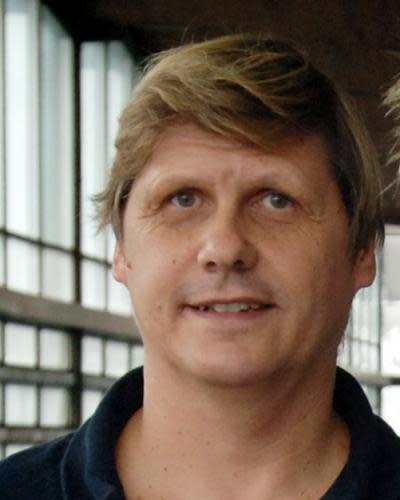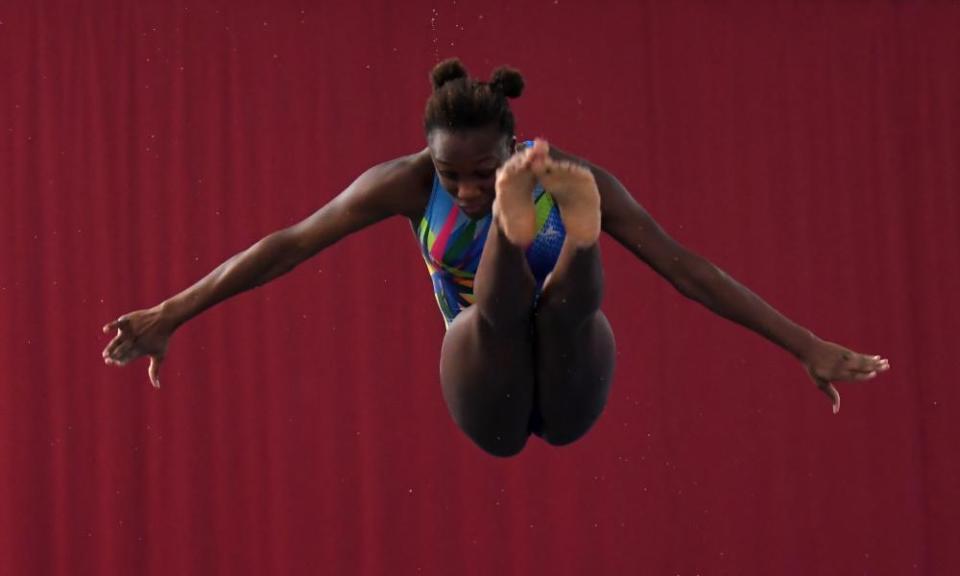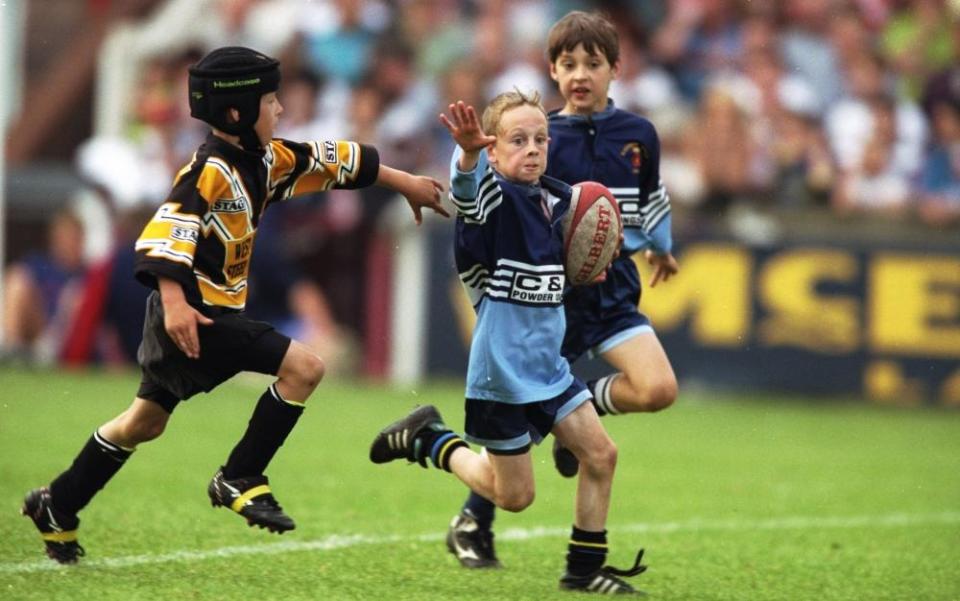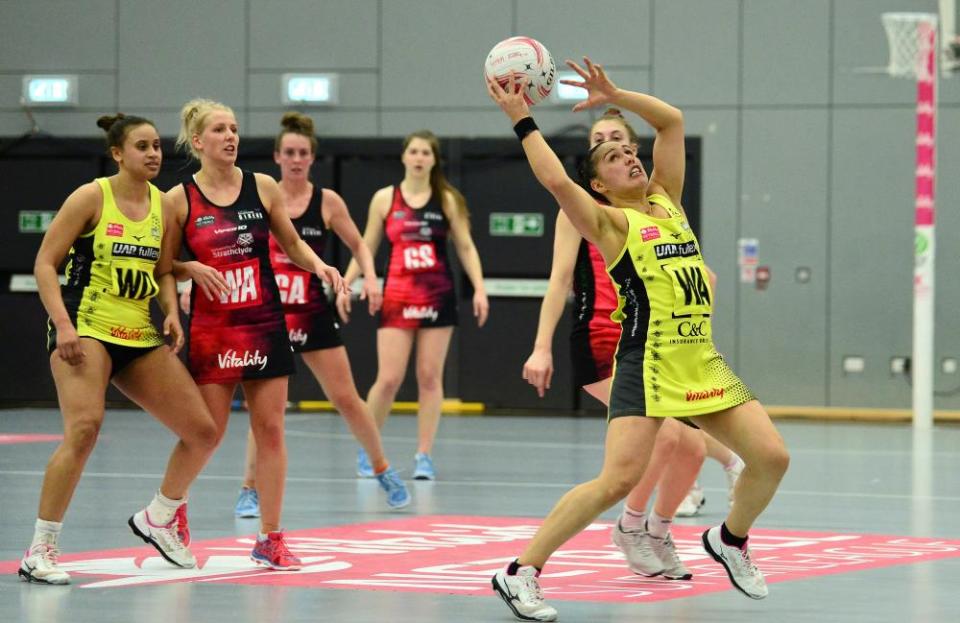Scouting report: what talent-spotters are looking for in young hopefuls
Diving
Chris Snode, scout for Crystal Palace diving club

Ninety per cent of our divers come from an acrobatic background: tumbling, gymnastics, trampolining or even dance. We are looking for a certain body type, not tall, but compact and fast – on the 10m board you need to be slighter so there is less body moving through the water and on the springboard you need a bit more power. Toe point is crucial, it is the last thing the judges see entering the water. Knobbly knees are a disadvantage and flexibility and courage are a must.
We have an excellent programme at Crystal Palace, we go into junior schools and test years three, four and five and return four years later – a kind of crop rotation I call it. Over the past 13 years we’ve tested 183,357 kids over 12 south London boroughs and it works because we give them a reason to keep doing it. For a talent system to work you also have to marry the talent found with access to expert coaching, which we have worked hard to achieve at CP.
In the school testing, we’re looking at how springy they are, their toe point, their flexibility, especially that of their achilles and how close they can get their chin to their knees. Also their shoulder flexibility because if your shoulders are too tight you can’t get your arms locked above your head so you hit the water head first.
Big hands are an advantage as they suck down more water than little hands and that creates a depression in the water that sucks the splash down – the sound of this type of entry is likened to a sonic boom, which divers call a rip. Tom Daley has one of the best in the world.

Once talented children enter our programme, the manager, Gill Snode, tracks those who really start to shine and she passes the best over to our Chinese coaches [Lin Chen and Xinde Zhang] and other elite coaches. Most successful divers started quite young, Tom Daley and Jack Laugher at seven for example, but we do pick some children up in the first year of secondary school, such as Desharne Bent-Ashmeil, a rising star from Croydon.
You need to have what I call a crazy sort of sanity to dive, I don’t know why we want to leap off a high board, some people don’t, others really crave it.
Rugby league
John Bastian, head of youth development, Hull KR
At Hull Kingston Rovers we have six scouts, all are volunteers, and we focus on clubs in our own county of East Yorkshire and finding players there. The highest percentage come from the city of Hull.
We tend to start looking round at about 12-14 years, at community and school games. I’m open-minded about who I watch. It doesn’t matter if it is a team in division five or the gun team of that area – players at the top don’t always push through and the lower leagues provide some great young players.
I’m looking for the personality of the individual, the type of person they are, whether they’re outgoing, a good communicator, enjoy playing the game, their enthusiasm and workrate. We also take an interest in their background, what’s around them in terms of support and what we need to do to build around that. We encourage their holistic development and build confidence.
There are kids of different backgrounds but it really doesn’t matter whether their parents are doctors or roadsweepers, what’s important is that we all want the same thing for the young person.

In rugby league you’ve got to have speed and size, a really good work ethic and cardiovascular fitness. Fitness levels in rugby league are improving all the time, the lifestyles of the players are ever-improving and we’re trying to ingrain into young players to make the right choices.
Position plays a part. It would be very difficult to have a 5ft 2in prop forward, but being a key organiser, having a high-energy tank and high workrate is important, too. We’ve got some outstanding players who don’t get to be 6ft 5in.
We offer scholarships to kids in year 10 and then we decide whether to contract them part-time to our academy. I think it can be quite a drain on parents and on players travelling in excess of 120 miles to training, and having to pay for that, so I’d say certainly until you’re 16 years old stay local, make life easy for yourself.
I’m a big fan of enjoying sport till it starts to get serious and I think Premier League clubs picking up kids at five or six is far too young. Obviously football is much bigger commercially so in rugby league we have to do it in a different way.
Football
Tor-Kristian Karlsen, football scout in the UK, France, Russia and Israel
When you’re looking at 15-18 year olds, their first touch is very important, especially at the pace the game is played today. Size is not that important in wide players but in centre-backs and centre-forwards and goalkeepers you traditionally want the extra centimetres and you need players that are quick, especially in wide positions.
Those who have made it to Premier League academies have come through so many filters that they already tend to have a good mentality, though there are certain things you can pick up from how they present themselves on the pitch. You notice body language, those who hide from the ball, those who take responsibility and are committed to turn the score around if they are losing, those who want the ball and how trusted players are by their teammates.
There is a tendency now for everyone to want total footballers, but certain attributes are still important for certain positions. Full‑backs today are expected to take more part in buildup so they need a more technical basis and to be able to keep the ball in tight situations. It is hard without a good aerial game and they need good mobility because at the highest level if they are wooden they won’t make it.
Central midfielders need to be multitalented, to master all facets of the game, to be able to keep the ball and master transitions. They need to be creative on the ball and have great agility and the ability to close opponents down.
Forwards need creativity and an ability to take defenders on one on one, something lots of scouts are looking for. They also need to be either exceptionally good at setting up teammates or else putting the ball in the back of the net. As for goalkeepers, maybe I’m old school but they need to keep the ball out of the net.
Footballers have to be more rounded than 25 year ago, though it does depend a little on the country. In Mediterranean Europe, there is still a priority on the technical aspect, but in England, despite the massive improvement in the quality of the Premier League, you still need athleticism more than ever and to be able to excel at the highest pace. What has gone out of fashion is specialist football who are very good at one or two things, be that tremendous crossers or having exceptional speed.
Netball
Karen Greig, director of netball at Manchester Thunder
There is a perception you have to be 5ft 10in to be a good netballer, but we have girls who are 5ft 5in, 5ft 6in, in the pathway. Alicia Scholes, Paul Scholes’s daughter, is only 5ft 5in but she reads the game really well and has great ball handling. England’s Natalie Haythornthwaite is 5ft 8in and can play goal attack and wing attack and the former New Zealand international Liana Leota is 5ft 6in. If you’re short, though, you have to be prepared to put the extra hours in. There is a point where lack of height can become a hindrance but there is always room for an anomaly.
Manchester Thunder have trials once a year. Some girls who are not in our programme but from the five counties that sit underneath Thunder (Greater Manchester, Merseyside, Cumbria, Lancashire and Cheshire) have the opportunity to move up during the year and can either be absorbed into the pathway or sent back with some advice.

Netball is a bit of a crazy sport, you have an idea that shooters look like this and defenders look like that, but it is not necessarily puberty that is important in netball but the development of positional awareness. We find that defenders are traditionally later developers, with their long gangly frames.
We are forever talking to coaches and saying it is not about them being the final product at 16. The centre court players develop a lot quicker because they tend to be smaller and their centre of gravity is lower, but shooters suffer similarly to defenders. If they’re 6ft they’re told to hang around the goal and shoot but they’ve still got to have the same game skills as the others, we’re trying to develop all-round players.
I always find that every year at Christmas they all shoot up and they come back and they’ve forgotten how to play – nothing works and their centre of gravity is a bit off. It is something about all that turkey and roast potatoes.
We are looking for efficiencies: as a goal shooter, say, your stats need to be above 75% to have a chance of getting a high score; and we are looking at your availability to receive the ball. Then there are transitions: are you able to flip-reverse eg are you able to defend if you have lost possession as an attacker, and vice versa? Plus basic ball skills, timing, availability.

 Yahoo News
Yahoo News 
